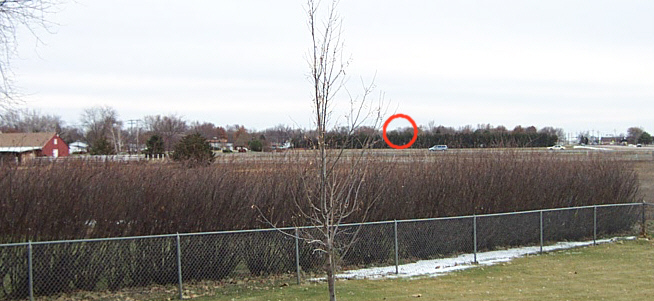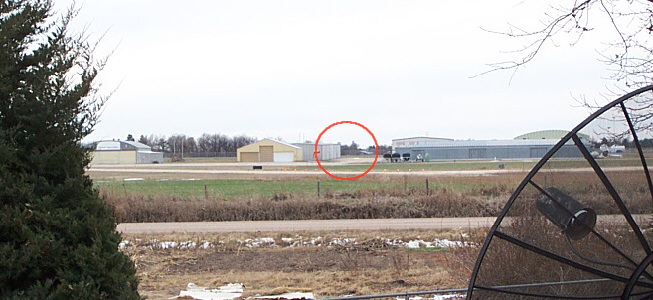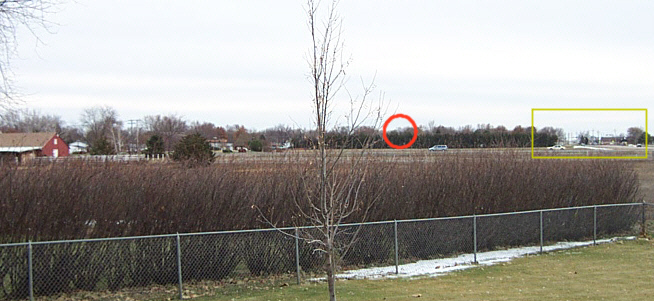Hastings Wireless: Testing Long-Distance Links
2003 May 01 - Brian Kloppenborg
The first objective of Hastings Wireless will be to test the feasibility of long-distance 802.11b networks using consumer hardware. To complete this objective, we decided to take advantage of a local telephone company who also offers wireless internet to the surrounding community. When I was first looking for an ISP I stumbled across Glenwood Telephone Membership Corporation> (GTMC or Glenwood Wireless), a local WISP. I was thinking about subscribing to their service for many reasons –two of which involved my home being outside of the DSL limit and my home not subscribing to cable TV– but I decided not use their service when I discovered that a few of their customers alleged that GTMC oversold their bandwidth. They do however, have an abundance of 802.11x networks established COOP grain elevators throughout Adams County. I decided to give long distance 802.11x networking a shot.
After making a trip down to Blue Hill, NE to talk with GTMC engineers about our project, in November 2002, we found the location of two GTMC access points relative to Node 1. I have provided pictures below:
 |  | |||||||||
Above Image: Node1 to GTMC-Hastings;
Digital Camera. Direction: South
| ||||||||||
 | ||||||||||
Above Image: Node1 to GTMC-Juniata; Digital
Camera. Direction: West.
| ||||||||||
 | ||||||||||
Sometime in early May 2003, we established that we could receive signals from both of the nearby GTMC towers using a DLink DWL-520+ PCI card and a 24 dBi parabolic grid antenna. Although links were established, external connectivity was limited, therefore we were unable to test bandwidth. According to the built-in link indicator, we had connections in the range of 1-11 Mbps.
Therefore, we have established that a long distance link is possible in a NLOS or a LOS setting. But wait, there is more!
A few weeks later, we decided to test two-way communication between the desktop computers in which we had installed the DWL-520+ PCI cards. Unfortunately, poor weather conditions stopped that activity fairly early. Instead, we attempted to re-establish links to the local GTMC towers (this worked) and searched for additional access points in the area. One of the additional APs was near the Imperial Mall, the other of which is the GTMC-Ayr Tower. I am unsure of where or on what the transmitter is located but its SSID identified it as an GTMC node located in Ayr, NE. For visualization I have included more pictures:
 |  | |||||||||
| Above Image: Node1 to GTMC-Hastings
(Red), GTMC-Ayr (Gold); Digital Camera. Direction: South. Right Image: Node1 to GTMC-Ayr; Global Positioning Map, http://maps.yahoo.com.
| ||||||||||
Note: Although I may boast that this signal was achieved, I have so far been unable to recreate a link. It could either be due to some strange atmospheric condition that allowed me to make the link to start with, or the fact that all of GTMC’s networks were undetectable using DLink’s auto detect feature. GTMC has not gone out of business, but they may have detected the pings I sent and since “stealthed” their networks, who knows?
The data rate is another story. I noticed that the traffic going down Marian Road interfered significantly with the signal. Therefore I can only estimate the data rate with a broad range of uncertainty. The lowest data rate that was auto detected was two megabits, the highest was 11 megabits.
If (and when) I am able to retest this link, I can provide more concrete data. I hope to narrow down the location of this tower and in turn confirm that it is in Ayr, NE. The SSID and network hardware type leads me to believe that I have indeed established a long distance 20 Km link in a NLOS situation.
Conclusion:* A 802.11x network link should be able to be established; however, more data needs to be collected to confirm that the 20 Km link did indeed exist with feasible data transfer rates.